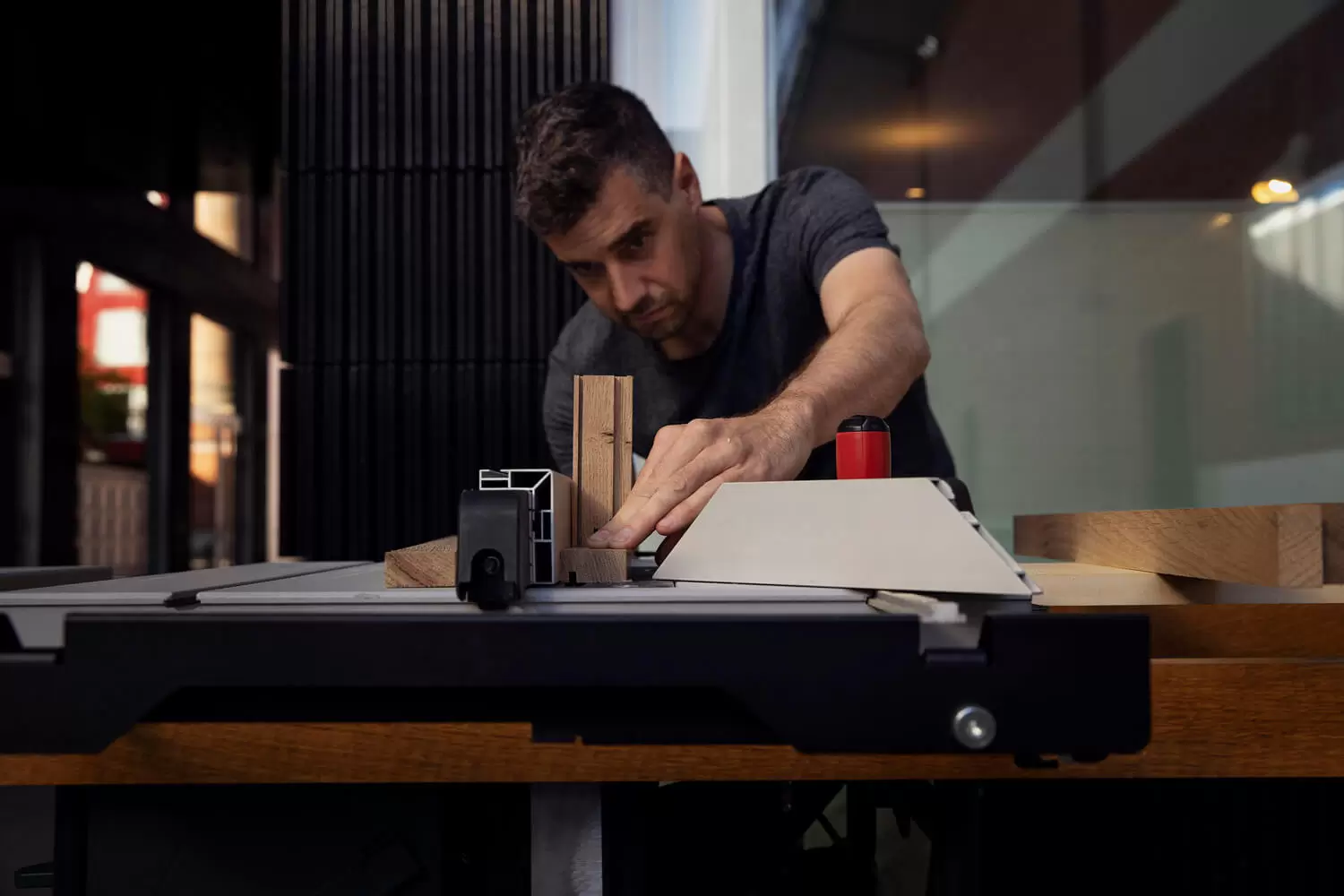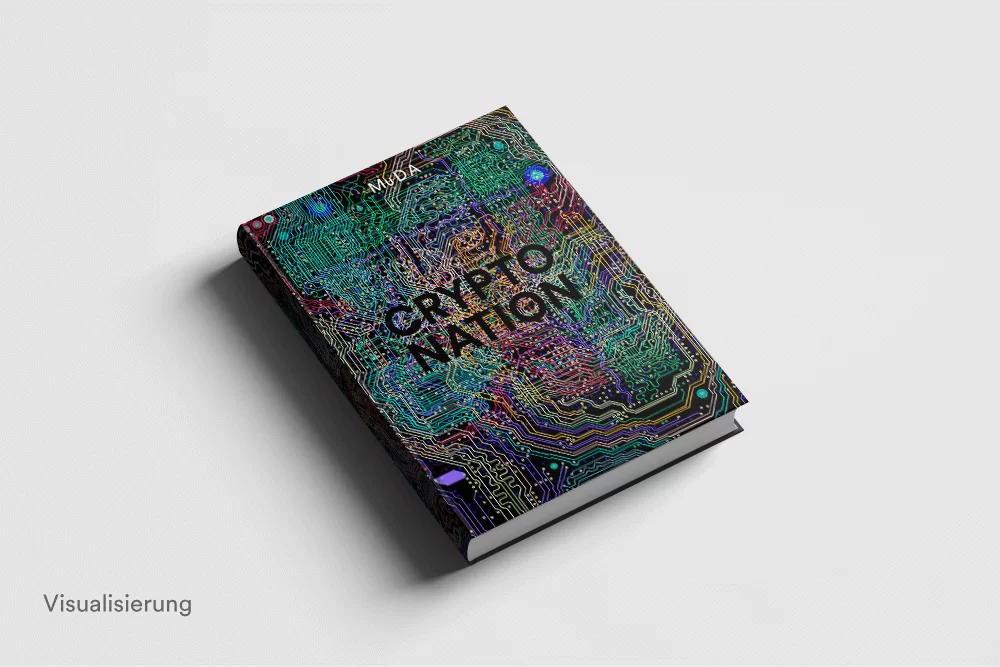When two innovators come together with a common goal, the possibilities are endless, particularly when they are from diverse industries. Polymath Christian Etter and Blockchain expert Alexander E. Brunner envisioned an aesthetic work of art that expands the NFT universe and intimately joins the digital and physical domains. A piece that people would hang in their living room and a great addition to any space, miles away from the conventional black-framed NFT displays we are used to seeing.
This past October, the two came together to make it happen and created Etter Edition 01, a unique NFT within a dedicated wooden frame. Inside are industrial-grade LED elements, ten powerful processors embracing Blockchain technology hidden between two pieces of glass.
Etter Edition 01 utilises tokens to initiate its algorithm; each token conceives a remarkable version of algorithmic generative art. The results are exceptional; the superior LEDs radiate a calming ambience of captivating hues of colour delicately compelled by motion, making this one-of-a-kind NFT the focal point of any room.
Etter and Brunner have been working together for years and deeply understand each other’s strengths. This collaboration is a perfect example of that understanding, as the innovative duo have successfully integrated NFTs into the physical world in the form of something exquisite and personal, and this is just the beginning. We caught up with the pair shortly after the launch to learn more about the project and what’s next for the two visionaries.
Q: Hi Alexander and Christian! How are you both doing? Thank you for taking the time to speak with us. Please introduce yourselves to those who do not know you.
AB: Hi, nice to meet you as well! I am the co-creator of the hybrid NFT art project Etter Edition. I have been supporting traditional artists in Switzerland for many years. I am also the president of the Home of Blockchain.swiss which is a Swiss economic promotion initiative.
CE: Nice meeting you as well! I am the co-founder of the Museum of Digital Arts in Zurich and the creator of several award-winning computer games, such as Drei. I designed several publications. My most recent project was to design a large interactive LED display for a big shopping mall in Zurich.
Q: Alexander, can you tell us how you started in Crypto, how Crypto and Blockchain technology has played a role in your life, and why you decided to pursue a career in that industry?
AB: By chance, it was pure luck! Back in 2016, I worked for a family office in Zurich. Someone told me about new and unknown crypto startups in Zug. So I went to have a look. That is how I fell down the proverbial rabbit hole of Crypto and Blockchain! Because it’s such an exciting technology with a fascinating community, I decided to leave the world of finance in 2018 and authored a book, “Crypto Nation Switzerland”. I never looked back!
Q: Christain, you are one of the founders of the Museum of Digital Arts in Zurich. Can you tell us more about the Museum, its program and why you decided to start it?
CE: The Museum of Digital Arts in Zurich was the attempt to build a physical and virtual platform showcasing art based on numbers, zeros and ones to investigate the links between data, algorithms and society.
Q: Alexander, you are an entrepreneur, acclaimed author, and expert on Blockchain and digital assets. In addition, you also provide consultancy on these topics to companies, including the Swiss government. Can you tell us more about this?
AB: Blockchain technology is slightly over a decade old – so it is still very young! While recent years have heavily focused on investment and speculation, there is now a new generation of projects that aim to bring the benefits of the Blockchain, decentralization, transparency and new marketplaces to established industries such as art, music and larger private markets. I am currently involved in two Swiss and one European project in each of the mentioned industries. Simply put, it is about building bridges between established industries and the blockchain world. It is absolutely fascinating!


Q: Your recent project “Etter Edition 01” intimately joins generative art with decentralized tokens and expands the NFT universe into the physical realms and is a collaboration with Internationally acclaimed Swiss designer and artist Christian Etter. Can you tell us more about the project, its essence and how the collaboration came about?
AB: Our ambition was to create an aesthetic work of art that you would want to have in your living room. We have looked at many NFT projects and what always bothered us was that they required a black screen. I do not have a TV in my living room, and it was clear to me that I did not want a screen to display my NFT. This is when we decided to build our dedicated frame out of 10 industrial-grade LED elements that are powered by 10 powerful processors. They sit in a wooden frame with two layers of glass. As a result, the entire frame is one unit with all the technology ‘hidden’ inside. The effect is really surprising – totally different from any standard TV screen. Tokens are needed to initiate the algorithm that runs on the frame. Each token creates a unique version of the algorithm.
Christian is a true polymath: he is amazing with hardware, developed and coded award-winning games and was trained as a lithographer. He designed my book and several reports for me. When we published my last report in 2021, I had the idea for an NFT project. Initially, Christian was sceptical of the crypto community but has slowly warmed to the idea.
“Etter Edition 01”
Q: In the last few years, NFTs have gained widespread attention, selling for astronomical prices, consequently sweeping through the art world. How do you think NFTs compare to physical art as an asset class?
AB: NFTs took off in 2021, and you could argue they crashed this year. Therefore, they have a very short track record. What is also clear is that the community of NFT buyers are fundamentally different to the physical art world with a century-old history.
What NFTs clearly have done is elevate generative or digital art. What is also obvious is that the pace of innovation is breathtaking. I envision a future where the technological underpinnings combined with its community start to influence the traditional art market. First signs can be seen of this happening already. Ultimately, it will be interesting to see if the NFT community can attract buyers from the wider art world.
Q: We have faced a bear market in Crypto over the last few months. In your opinion, how long do you think Crypto will be bear market and do you have advice for holders to make it through?
AB: Earlier this year, there were more than 20,000 tokens or coins. As we already saw in the last crypto winter in 2018, the large majority of these coins or projects will disappear. In Switzerland, I hear many crypto projects are dying. This process is not through yet.
On the upside, as mentioned before, I see larger financial players, big corporates and the Big Tech companies such as Alphabet investing in the blockchain and digital asset space. Today is the time to build, and I see startups fundraising at much more modest valuations. These are truly exciting times for smart startup investors and founders!
Q: What’s next for Christian and Alexander?
AB: As an advisor and investor, I am heavily involved in three super-exciting startups in the blockchain ecosystem. It is time to co-create and build, and I am absolutely blessed to be sitting right in the centre of one of the world’s leading blockchain ecosystems: Switzerland!
CE: Alexander and I are currently thinking on how to continue with our NFT hybrid art project. We have a few exciting ideas! I also plan to launch a sustainable and super simple shelving system. I am also interested in cutting-edge computer-operated knitting machines. I want to start a highly customizable clothing line!
©2022 Christian Etter, Alexander E. Brunner








